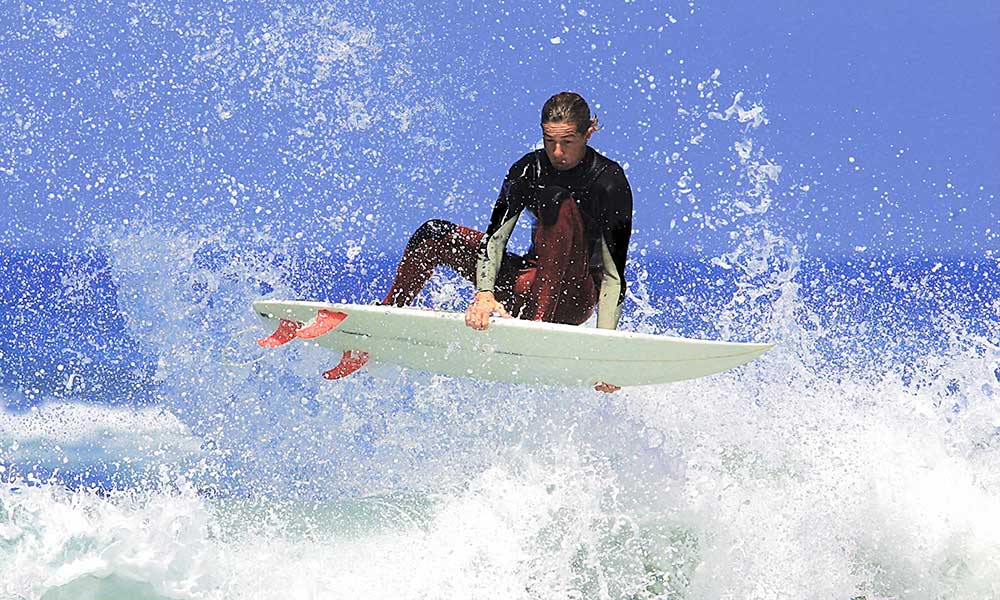To the uninitiated, a fish surfboard looks like a shortboard, albeit with a few interesting design tweaks.
If you take a closer look, you’ll notice that the fish-tailed board is unlike its shortboard counterpart and provides a number of benefits that you just won’t get with a traditional shortboard.
At the same time, however, a shortboard can do things that a fish can’t, and if you want to buy the right board for your skill and experience level, it’s important to understand how they differ.
Fish Surfboards vs Shortboards
The fish board has a fish-shaped tail, also known as a swallow tail or a split tail.
It tends to be much thicker and wider than a shortboard and it also has a flatter rocker.
The width and thickness provide more volume, making a fish board more suitable for a beginner surfer than a traditional shortboard.
The swallow tail provides added turning ability and helps to offset some of the disadvantages of having all that extra volume.
Fish boards are not quite beginner boards and are more of a step-up option, but they are certainly easier to ride than most shortboards.
The extra stability that they provide means they are easier to control while the volume and flat rocker allows for greater planing speed, giving surfers more freedom on mushy waves.
Shortboards are best reserved for expert surfers, as well as those seeking improved turning ability.
A shortboard can become your go-to board all year long, providing the conditions are right.
A fish board, on the other hand, is more suited to beginners and intermediates and can also be added to the quivers of expert surfers, for when they want to catch waves on calm days.
Should I Get a Fish Surfboard?
If you have the money for it, go for it!
Assuming you’re not a complete beginner, fish surfboards can add a little something extra to your quiver and give you more options when the waves are not ideal.
Are Fish Surfboards Good for Beginners?
A longboard, foamie, or egg board is a better option for a beginner.
The fish design is great and very fun to ride.
It’s also much easier to handle than a shortboard.
But as a complete novice, you need to go as big as you can get.
All of that added volume and buoyancy will help with stability and paddling, ensuring you spend more time on the board and less time in the water.
Is it Harder to Surf on a Shortboard?
Shortboards, as the name suggests, are fairly short and this can make them a challenge for beginner surfers.
Compared to fish boards, there isn’t much of a difference in length, but there is a sizable difference in width and thickness.
A shortboard tends to be much thinner and narrower.
It’s great for expert surfers who need to keep things light so they can glide over the waves, but it’s not ideal for beginners.
Whether you’re a complete novice or someone approaching an intermediate level, you’re probably not ready for a traditional shortboard and may struggle with the reduced volume.
Summary: Fish Board vs Shortboard
There are many different surfboard designs out there, and your options are not simply to opt for a fish board or a shortboard.
If you’re asking this question, it’s probably because you’ve already experienced longboards and are looking to move up a level.
In such cases, it really depends on what kind of conditions you’ll be tackling.
If you’ll be riding big waves and looking for the most optimum performance throughout, stick with a shortboard.
Providing you can handle it, a shortboard will give you everything you need.
There may be some tweaks needed with regards to the fin setup, but generally, it’s the best board for expert surfers.
If you’re looking for something to manage mushy waves and have a little fun when your shortboard is struggling, take a look at a fish surfboard or a fish hybrid surfboard.







